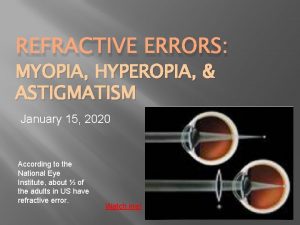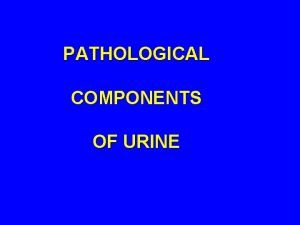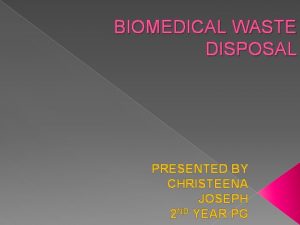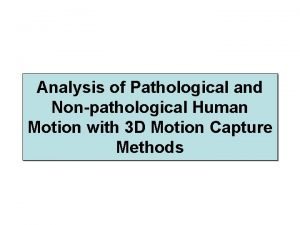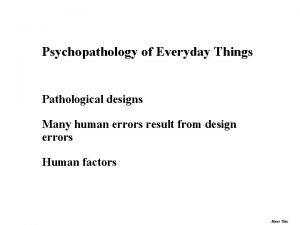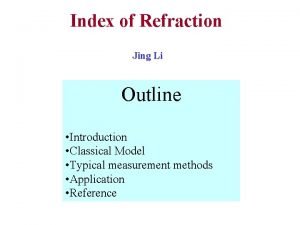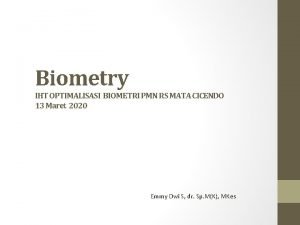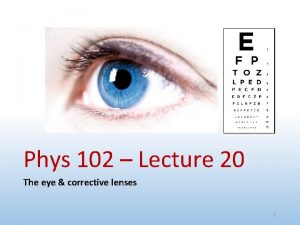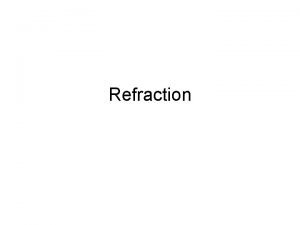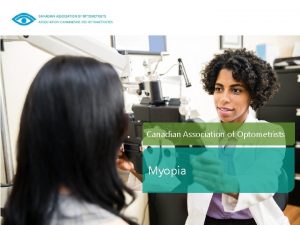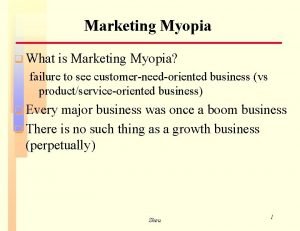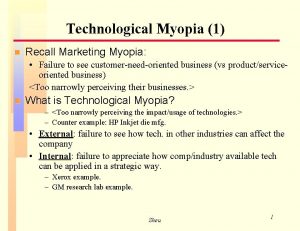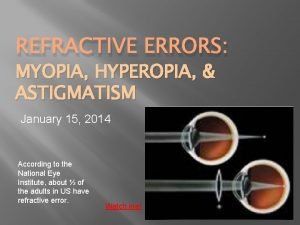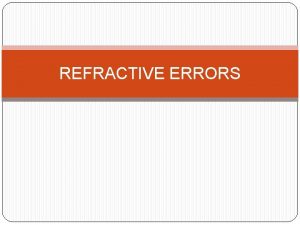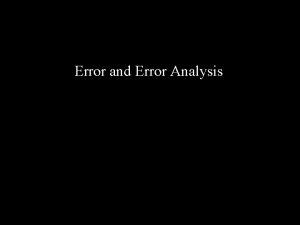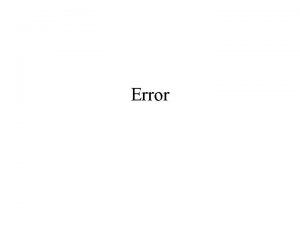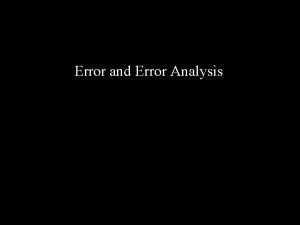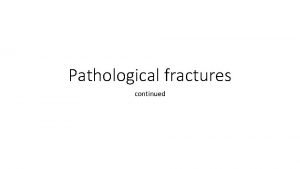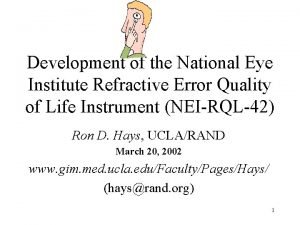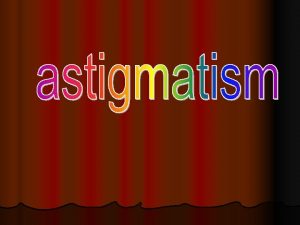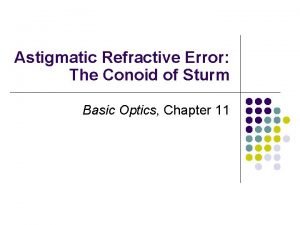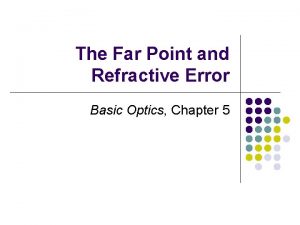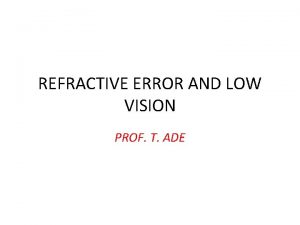Pathological Myopia Pathological Myopia Clinical refractive error 6

























- Slides: 25

Pathological Myopia

Pathological Myopia Clinical : refractive error >6 D. • Myopia with degenerative changes especially In the posterior segment. • Myopia caused by pathological axial elongated Of the eye ball. Specific : a rapidly progressive error which starts in childhood at 5 -10 years of age & results in high Myopia


Synonyms l l l Degenerative myopia Progressive myopia Malignant Myopia High degree myopia Magna myopia

Etiology l The rapid growth of axial growth of eye ball is witnessed as the main cause for the pathological Myopia which is unequivocal & outside the normal biological variants of development. l No satisfactory theory has emerged to explain this. l It is definitely linked with : (1) Role of heredity. (2) Role of general growth 1. Role of heredity : it is confirmed that genetic factors play a major role in the etiology.

l It is presumed that heredity linked growth of retina is the determination in the development of myopia. l The retina due to its distensibility stretches with retina. l But the choroid cannot & undergoes degeneration which in turn cause generation of retina.

Symptoms l l l l Image infection Anisometric amblyopia Subnormal visual acuity Visual field defects Impaired dark adaption Abnormal color discrimination Suboptimal binocularity

Signs l l l Prominent eye ball Cornea is large Anterior chamber is deep Large and sluggish pupils Visual field contraction On fundus examination : ü Large and pale optic disc ü Tilted optic nerve papillary atrophy ü Temporal myopic crescent/peripapillary

Signs ü ü ü ü ü Crescent Blond fundus Chorioretinal atrophy Peripheral vitreous detachment Lacquer cracks Lattice degeneration Peripheral retinal holes Macular holes Choroid neovascularization

üLarge and pale optic disc :

ü Tilted optic nerve with peripapillary atrophy :

Temporal myopic crescent/ peripapillary

ü Tigroid/Blond fundus :

ü Choroid retinal atrophy :

ü Posterior vitreous detachment

ü Lacquer cracks :

ü Lattice degeneration :

ü Cobblestone degeneration :

ü Foster-fuchs spots :

ü Peripheral retinal holes :

ü Macular holes :

ü Choroid neovascularisation :

Complications : l l l l Retinal detachment Complicated cataract Vitreous & choroidal hemorrhage Strabismus fixus convergence Normotensive glaucoma Myopic foveoschisis Posterior staphyloma

Treatment :

Thank you
 Myopia classification degree
Myopia classification degree Refractive error diagram
Refractive error diagram Pathological designs
Pathological designs Pathological components of urine
Pathological components of urine Avulsion fractire
Avulsion fractire Pathological condition
Pathological condition Bio medical waste introduction
Bio medical waste introduction Hypropia
Hypropia Grading of jaundice in neonates
Grading of jaundice in neonates Pathological demand avoidance test
Pathological demand avoidance test Pathological analysis
Pathological analysis Murphy repertory rubrics
Murphy repertory rubrics Pathological design
Pathological design Haney banks and zimbardo
Haney banks and zimbardo Pathological designs
Pathological designs Pathologic jaundice
Pathologic jaundice Perspex refractive index
Perspex refractive index Donor acceptor ratio in physical pharmacy
Donor acceptor ratio in physical pharmacy Acs comp
Acs comp Refractive surprise
Refractive surprise Complex refractive index
Complex refractive index Refractive surprise
Refractive surprise Refractive power formula
Refractive power formula Negative refractive index
Negative refractive index Classement chirurgie réfractive
Classement chirurgie réfractive Velocity and refractive index
Velocity and refractive index

